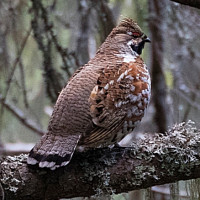Beschreibung
The most special bird of the Kainzbachtal (Kainzbach valley) is the Schwarzstorch. This stunning stork breeds here in the remote parts of the forest. The forested areas in the Kainzbachtal and the surrounding low mountain ranges of Eastern Bavaria with its many natural streams, ponds, swamps and wet meadows are his preferred habitat. The Schwarzstorch returns to his nest after wintering in Africa in March or April. The nest is created high up in a tree crown. It's a very shy bird and quit hard to spot. So you have to be lucky to see one foraging along the water or flying over. But walking through the beautiful surroundings you can see many other nice birds. The Tännesberger Rundwanderweg (The 7 km trail you see on the map) is a nice walk which crosses the Kainzbachtal and leads you through some nice and birdrich areas and viewingpoints. Among the birds you can see in the area are Grauspecht, Wespenbussard, Schlagschwirl, Waldwasserläufer, Turteltaube, Rebhuhn, Haselhuhn, Neuntöter, Raubwürger, Feldlerche and Braunkehlchen.
Details
Zugang
The starting point of the 7 km trail is the parking lot of the Geologischen Lehrpfades (geological nature trail). This is well signposted in Tännesberg. See the P on the map.





